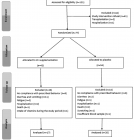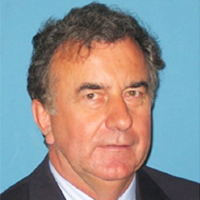Table of Contents
A rare case of foreign body in coronary sinus. A novel endovascular method for retrieval
Published on: 30th March, 2023
Central venous catheter fracture and migration are rare complications in patients receiving long-term infusions or chemotherapy. We present a rare case of a chest port catheter fracture that migrated into the coronary sinus. This case is likely the fourth report of a port catheter fracture with migration to the coronary sinus. Because of the difficult-to-retrieve location, multiple attempts were unsuccessful with traditional techniques using a loop snare. Finally, the fractured portion was disengaged from the coronary sinus using a navigational electrophysiology catheter guided by intracardiac echocardiography; the dislodged end was snared and eventually removed by the femoral route. This case of a chest port catheter fracture is unique because of the unusual migration to the coronary sinus and the use of a navigational electrophysiology catheter as a novel retrieval technique.
A proposal of risk indicators for pathological development from hemodynamic simulation: application to aortic dissection
Published on: 28th March, 2023
Cardiovascular diseases are the leading cause of mortality in the industrialized world. Among these diseases, aortic dissection affects the aorta wall and is a surgical emergency with a low survival rate. This pathology occurs when an injury leads to a localized tear of the innermost layer of the aorta. It allows blood to flow between the layers of the aortic wall, forcing the layers apart and creating a false lumen. Endovascular treatment seeks to obliterate the entrances to the false lumen with a covered stent. There are very few studies on the postoperative demonstration of blood flow phenomena in the aortic dissection endovascular treatment. It is crucial to study the hemodynamics of blood in the aorta after an intervention because the new geometrical configuration of the aorta with a stent leads to modifications in blood flow. For the surgeons, the procedure can only be performed empirically, using MRI-4D images to view the postoperative flow of the patient’s blood in the aorta with the stent.This paper aims to present a numerical tool developed from the open-source software FOAM- Extend®, allowing for multiphysics numerical simulations. Using MRI data, a bio-faithful model of the patient-specific case was built. Numerical simulations were performed to predict preoperative and postoperative (endovascular treatment) hemodynamics. The modifications of the flow in the aorta were analyzed focusing on the postoperative perfusions. The results were compared with the corresponding MRI data and have a good qualitative agreement. Biomarkers are calculated to localize possible zones of post-operative pathological developments and recommendations may be suggested to the surgeons.
Soliton phenomena in the process of the functioning of the heart
Published on: 14th March, 2023
The biochemical model explains the intricate mechanisms of psychobiological life. He still cannot explain what the transition from inanimate to living matter is all about. Where is the threshold and what is its essence, what role do biochemical processes play in the coherence of the soma with consciousness and its impact on the soma and vice versa? A similar problem is with other mental processes, their nature does not fit into the biochemical model of life and is inexplicable on the basis of biochemical interactions, again it is much easier to describe it in the light of quantum processes - including wave physics. It is similar to the functioning of the heart or other organs, where only the biochemical processes of the cell are considered, ignoring the bioelectronic processes. Man is not only a purely biological construct but also contains the basis of biochemical, bioelectronic, information, and cybernetic processes that are responsible for shaping the psychobiological processes of man. Contemporary biosystems in science are considered at the level of corpuscular structures, ignoring energy and information structures. By shifting the cognitive emphasis towards energy and information structures, the organism can be perceived as a quantum generator of information: electromagnetic, soliton, acoustic, spin and bioplasma. This bioelectronic construction creates homo electronics with his electronic personality.
Left ventricular assessment in patients with significant mitral incompetence: a multi-modality imaging study
Published on: 9th March, 2023
Background: Detection of the deleterious effect of MR on LV is crucial in guiding the surgical decision. Aim of the study: Comprehensive assessment of LV with significant primary MR using (2D, 3D echo and CMR). Methods: 40 patients with significant MR have been recruited in a prospective study. Patients underwent 2D and 3D echo and CMR studies. LV volumes, function and GLS were calculated. Results: End diastolic and systolic volumes were significantly larger when measured by CMR (all p < 0.001). EDV measures were strongly correlated with CMR and 3D echocardiography. Conclusion: It’s important to identify early deleterious LV changes.
Outcomes of intervention treatment for concurrent cardio-cerebral infarction: a case series and meta-analysis
Published on: 18th January, 2023
Background: The concurrent occurrence of acute ischemic stroke and acute myocardial infarction is an extremely rare emergency condition that can be lethal. The causes, prognosis and optimal treatment in these cases are still unclear.Methods: We conducted the literature review and 2 additional cases at Al-Shifa Hospital, we analyzed clinical presentations, risk factors, type of myocardial infarction, site of stroke, modified ranking scale and treatment options. We compare the mortality rate among patients with combination intervention treatment (both percutaneous coronary intervention for coronary arteries and mechanical thrombectomy for cerebral vessels) and medical treatment at the hospital and 90 days after stroke. Results: In addition to our cases, we identified 94 cases of concurrent cardio-cerebral infarction from case reports and series with a mean age of 62.5 ± 12.6 years. Female 36 patients (38.3%), male 58 patients (61.7%). Only 21 (22.3%) were treated with combination intervention treatment.The mortality rate at hospital discharge was (33.3%) and the mortality rate at 90 days was (49.2%). In patients with the combination intervention treatment group: the hospital mortality rate was 13.3% and the 90-day mortality rate was: 23.5% compared with the mortality rate in medical treatment (23.5% at the hospital and 59.5% at 90 days (p value 0.038 and 0.012 respectively) Conclusion: Concurrent cardio-cerebral infarction prognosis is very poor, about a third of patients died before discharge and half of the patients died 90 days after stroke. Despite only one-quarter of patients being treated by combination intervention treatment, this treatment modality significantly reduces the mortality rate compared to medical treatment.
Isolated multiple pericardial hydatid cysts in an asymptomatic patient: Role of the CMR
Published on: 6th January, 2023
Hydatid cysts primarily affect the liver and secondary involvement may be seen in almost any anatomic location. We describe the unusual pericardial location of the Echinococcus cysts in an asymptomatic patient with suggestive cardiac magnetic resonance imaging.

HSPI: We're glad you're here. Please click "create a new Query" if you are a new visitor to our website and need further information from us.
If you are already a member of our network and need to keep track of any developments regarding a question you have already submitted, click "take me to my Query."

























































































































































